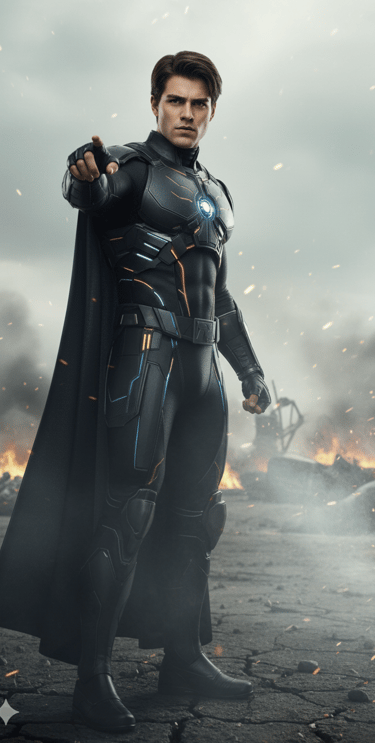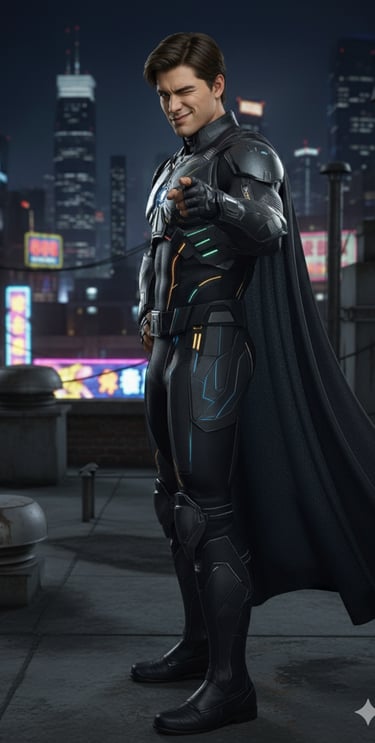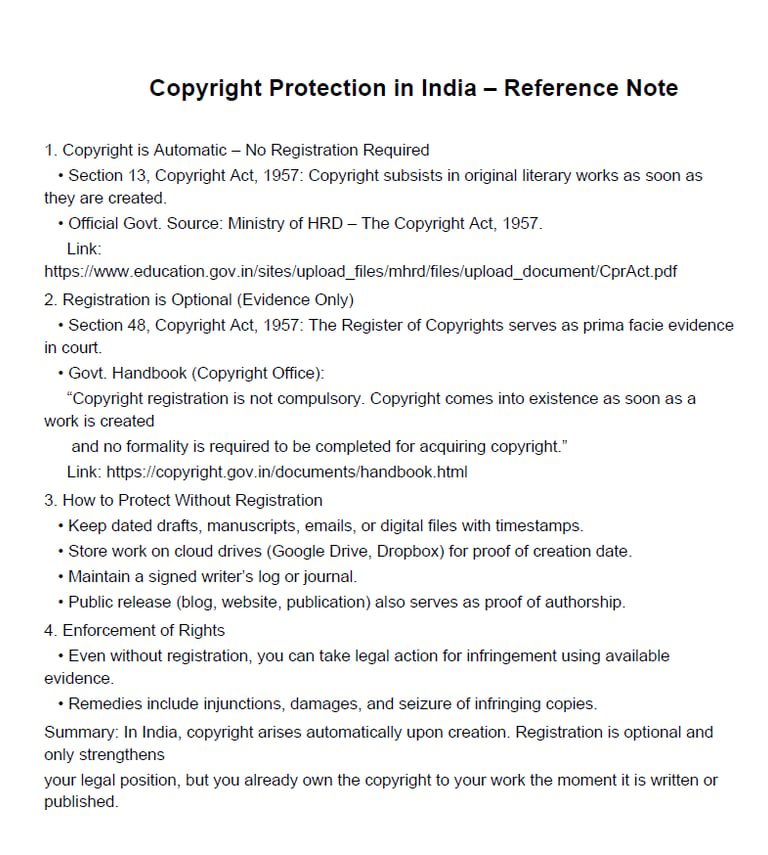Kṣaya Anantashrī
Description of Kṣaya Anantashrī
CHARACTER
Harkirat Singh
10/2/202512 min read












Kṣaya Anantashrī
At twenty years of age, Kṣaya Anantashrī carries within him a gravity beyond his years. Where others burn or roar, he walks like one marked by inevitability — quiet, steady, yet filled with an energy that unnerves those who look too long. He is young, but in his eyes flickers the weight of cycles turning, the whisper that all things end. He does not speak of this as doom, but as truth. His presence is strange: both unsettling, as if time bends around him, and comforting, as if no ending can truly erase what matters.
His youth is shaped by paradox. He has the recklessness of one who believes himself unbreakable, leaping into fights with fearless abandon, yet his power constantly reminds him of mortality. He can heal, multiply, rise again when struck down — and so he plays with danger, as though testing the boundaries of his immortality. But beneath that daring lies an awareness his companions feel: Kṣaya knows endings more deeply than any of them, and in his wild youth he struggles to reconcile the thrill of life with the certainty of dissolution.
His archetype is the Legion Eternal. He is not a lone warrior but a tide of selves, each fragment echoing his will. To his allies, he is strength multiplied — the boy who stands and rises again, who fights beside them as many, who will not let them feel outnumbered. To his enemies, he is dread: to face him is to fight an army in one body, to strike him down only to see him rise once more. His annihilation is not emptiness alone, but a cycle that promises endurance, the wheel that carries life forward even through ruin.
Kṣaya is still young enough to carry contradictions without shame. He laughs easily, though his laughter often feels like it comes from many voices. He is fiercely protective of his circle, his loyalty expressed not through gentleness but through relentless defiance: he will take the blows, he will return again and again, he will be the wall that breaks before letting them fall. Yet he also wrestles with impatience — eager to prove his strength, to show that the endless legion within him is not curse but gift. His recklessness sometimes unnerves his companions, but it also inspires them, for they see in him the truth of unyielding resilience.
Kṣaya Anantashrī is, above all, the youthful embodiment of inevitability. In his smile is the spark of a boy who still revels in life; in his silence is the hush of endings yet to come; in his fury is the force of many, striking as one. He is the reminder that endings do not weaken — they multiply, they return, they endure. At twenty, he is still learning what it means to be the Legion Eternal, but already his presence carries the certainty that his flame cannot be extinguished, for his flame is countless.
Character Traits of Kṣaya Anantashrī
Kāla-Puruṣa Pratirūpa – कालपुरुष प्रतिरूप – The Time-Born Multiplicity – Endless Tide of Selves: Kṣaya embodies the Kālkeya truth that one warrior may become an army, and no fall is final. His body bends with time’s cycles, regrowing, reshaping, multiplying into countless forms. To strike him down is to face only one fragment of his endless tide, for he rises again and again.
Regeneration Surge: Shattered limbs or wounds reform, reversing decay within himself.
Multiplicity Spawn: Splits into multiple duplicates, overwhelming foes with numbers.
Cycle Return: If one body falls, another rises, echoing the eternal tide.
Adapted Form: Each duplicate learns from wounds, returning stronger.
Endless March: His swarm advances relentlessly, never ceasing.
He is never alone, never singular — but a legion born of time, a tide of annihilation that no strike can silence.
Kāla-Vināśa – कालविनाश – Dominion of Time & Decay – Entropy’s Grip: Kṣaya wields the power of endings, bending time and decay into weapons. His touch carries the weight of centuries, his breath the stench of rot, his aura the slow ruin of all forms. He is entropy given will, the reminder that nothing resists the march of time.
Aging Touch: A single strike drains vigor, making even immortals feel centuries older.
Withering Aura: Enemies near him weaken as their strength decays.
Cycle Break: Freezes moments, stealing seconds from opponents.
Rotting Surge: Weapons and armor crumble under his entropy.
Death’s Whisper: His presence fills foes with dread of inevitable ruin.
Where he stands, time does not pass — it devours. In his shadow, even stone weeps dust and steel forgets its edge.
Nirvāṇa-Bala – निर्वाणबल – Power of Dissolution & Endless Might – Silence of the Void: Kṣaya carries the final truth — all things end in silence. His strength is not only brute force but dissolution itself: voids that unravel spirit, annihilation beams that consume matter, silence-fields that smother cries. To him, the battlefield is not chaos but inevitability — the stillness after the storm.
Void Sphere: Conjures zones where matter unravels into nothing.
Spirit Breaker: Tears at the soul, unraveling will and essence.
Bone-Crushing Strength: His blows strike with force beyond mortal measure.
Silence Field: Smothers sound and magic within a sphere of void.
Doombeam: A ray of annihilation that dissolves all it touches.
In his grasp, the world trembles, for he does not simply conquer — he unmakes. His might is the void, his strike the silence where all battles end.
Saṅgati-Pravāha – संगति-प्रवाह – The Flow of Harmony – Endless Tide, Shared Strength: Through Kṣaya, the overwhelming tide of the Kālkeyas does not remain solitary annihilation but becomes shared endurance. His multiplicity expands the circle, his regeneration steadies their hearts, and his decay bends toward harmony — the strength of one flowing into many, the many standing together as one.
Legion Bond: His duplicates fight not only for him but beside his circle, weaving them into a phantom army.
Regenerative Aura: His body’s renewal spreads into allies, sealing wounds and extending their stamina.
Cycle’s Flow: His time-bending slows enemies yet grants his comrades extra moments to strike.
Aura of Fortitude: His overwhelming might resonates outward, making his circle harder to break.
Harmony of Endings: Each dissolution of an enemy becomes a pulse of renewal for his allies.
Kṣaya is not only the legion’s tide but the wheel’s shield — his endless march carrying his comrades in unbreakable rhythm.
Amarajyotiḥ – अमरज्योतिः – The Immortal Flame – From Dissolution, Rise Eternal: Kṣaya is the annihilation that refuses silence. Even when his body falls, his multiplicity rises anew, and through this tide his allies rise with him. His fall becomes their renewal, his dissolution their rebirth, his void the field where despair is unmade and courage stands eternal.
Legion’s Return: Even when he is struck down, a duplicate rises to continue the fight, carrying his circle’s spirit forward.
Immortal Spark: His regeneration bursts outward, knitting wounds and rekindling stamina in allies.
Dissolution Renewal: Enemies consumed in void release energy that strengthens his comrades.
Timeless Defiance: His survival bends despair into endurance for the wheel.
Eternal Roar: His resurgence multiplies their courage, reminding them no end is final.
Kṣaya is the tide that drowns despair — the void that silences death, the legion that never ends. Through him, the wheel discovers immortality in unity.
Kṣaya Anantashrī – 10 Core Hybrid Powers & Abilities
Pratirūpa Vṛnda — Legion of Selves: For Him: Splits into multiple duplicates, each echoing his strength and skill. For Allies: His duplicates interweave with comrades, confusing enemies and making the circle appear larger than it is — a phantom army.
Kāla-Mārga — Path of Time: For Him: Slows enemies in a localized field, bending seconds into molasses. For Allies: Within the same field, their movements accelerate, as if gifted extra moments in battle.
Nirvāṇa Jvālā — Flame of Dissolution: For Him: Summons a blackfire that corrodes weapons, armor, and flesh. For Allies: The same blackfire surrounds them harmlessly, searing away curses, poisons, and corruption that cling to their bodies.
Vināśa-Dhvani — Roar of Ruin: For Him: His voice releases waves of dread, sapping enemy morale and strength. For Allies: The roar steadies their courage, turning fear into defiance and despair into endurance.
Ananta-Punarutthāna — Endless Regeneration: For Him: Shattered limbs and wounds reform as if time rewinds, restoring his body. For Allies: His regenerative aura quickens their healing, stitching wounds and restoring stamina mid-battle.
Avasāna-Chakra — Cycle’s End: For Him: A spinning seal of time that collapses an enemy’s vitality, aging them in an instant. For Allies: The cycle renews their strength, refreshing fatigue and restoring clarity as though a new dawn has come.
Śūnya-Grahaṇa — Grasp of the Void: For Him: Conjures a void-field that swallows incoming attacks and disintegrates projectiles. For Allies: The same void bends around them as a shield, swallowing harm before it reaches their bodies.
Kālkeya-Bala — Strength of the Legion: For Him: His muscles swell with the legendary might of the Kālkeyas, each blow capable of shattering stone and bone. For Allies: His aura lends them a fraction of this strength, making their strikes heavier, their shields firmer, their bodies harder to topple.
Pralaya-Saṅgati — Harmony of Dissolution: For Him: When he destroys an enemy, their essence dissolves into dust, feeding his strength. For Allies: The dissolution releases a pulse of energy that restores their morale, reminding them of the inevitability of victory.
Antaḥsparśa — Touch of the End: For Him: His hand channels pure annihilation, able to unmake what it touches. For Allies: His touch upon them has the opposite effect — sealing wounds, steadying spirits, and reigniting their will to fight.
These 10 powers make Kṣaya the legion-bearer of endings: an army unto himself, a tide of ruin against enemies, yet for his allies, he is renewal, strength, and a wall of void against despair.
Kālantasi – The Twin Blades of Time’s End: A pair of living swords — one pale as bone, one black as void — each strike bending cycles and dissolving matter, their harmony embodying the endless march toward annihilation and renewal. Forged at the edge of time itself, the Kālantasi were born from the clash of cycles and void. The pale blade, Śveta-Kāla, was carved from the fossilized remains of an ancient titan, its marrow still echoing with forgotten ages. The black blade, Kṛṣṇa-Kāla, was drawn from the silence of the void, quenched in dissolution where stars themselves collapse. United by the Kālkeya ancestors through ritual of annihilation, they were gifted to Kṣaya as both burden and covenant — to carry the dual truth that every ending bears renewal, and every renewal carries an end.
Form & Appearance
Śveta-Kāla (White Time): A bone-pale sword, veins glowing faintly like cracks of golden sand, its edge bending time with every strike.
Kṛṣṇa-Kāla (Black Time): A void-dark blade, its surface swallowing light, its edge dissolving matter into dust and silence.
The two swords hum in opposing tones — one resonant like ticking clocks, the other silent as still void.
When crossed, a ripple of both light and darkness arcs outward, symbolizing the meeting of cycle and end.
When dormant, they rest as twin scars upon his back, glowing faintly with alternating light and shadow.
Core Powers & Abilities
Dual Harmony: When wielded together, the blades amplify each other — time is slowed as matter dissolves, leaving foes helpless.
Cycle-Breaker (Śveta-Kāla): Slashes drain vigor, aging enemies and stealing their time. For allies, strikes renew vitality, refreshing fatigue and restoring stamina.
Void-Cleaver (Kṛṣṇa-Kāla): Cuts unmake armor, magic, and corruption. For allies, it dissolves poisons and curses clinging to their forms.
Legion’s Echo: With each swing, duplicates of Kṣaya split into existence, briefly mirroring his strikes as phantom warriors.
Eternal Fusion: When crossed in both hands, the blades merge into a greatsword of time-void flame, unleashing catastrophic force.
Symbolism & Role: The Twin Blades embody the paradox of Kṣaya: not only annihilation, but also endless return. Śveta-Kāla is the cycle, the pale memory of ages that restores as much as it drains. Kṛṣṇa-Kāla is the silence, the void that consumes, leaving nothing. Together, they mirror the Kālkeya truth: that annihilation is not simply ruin, but the eternal tide of endings and beginnings. In wielding them, Kṣaya becomes the Legion Eternal, the embodiment of countless warriors rising, falling, and rising again.
Threefold Activation Formula
Peacekeeping Form
Situation: When conflict and fear need to be calmed without destruction.
Invocation: Kṣaya crosses the two blades before his chest, whispering: “Cycle and void, guard, not consume.”
Manifestation: Śveta-Kāla releases soft golden ripples of time, slowing fear and soothing hearts, while Kṛṣṇa-Kāla swallows discordant voices and corruption. Together, they create the Field of Still Time, where people breathe easier, voices calm, and peace endures.
Battle Form
Situation: When his circle must fight with force and endurance.
Invocation: He spins the twin blades in opposite arcs, striking them together and roaring: “Endings rise, beginnings burn!”
Manifestation: Śveta-Kāla quickens his comrades with stolen seconds, while Kṛṣṇa-Kāla dissolves enemy armor and curses. His duplicates multiply in rhythm, fighting beside his circle. The battlefield becomes the Dance of Twin Tides, where allies strike as if many, and enemies crumble under withering decay.
War Form
Situation: When corruption or annihilation threatens all realms, demanding his full essence.
Invocation: Kṣaya raises both blades to the sky, then drives them into the ground, shouting the Kālkeya vow: “I am the legion unending, the end that births the end!”
Manifestation: The blades merge into the Mahā-Kālantasi — the Great Sword of Eternal End. A cataclysmic void-field expands, aging enemies into dust, dissolving corruption into silence, while allies are shielded in time’s renewal. Phantom legions of Kṣaya rise within the field, echoing his strikes until the tide of annihilation is complete.
With Kālantasi, Kṣaya is no longer one — he is many, he is endless, he is the Twin Tide of Annihilation and Renewal. His swords are not merely weapons but eternal truths: time consumes all, and silence awaits all — yet from that silence, strength rises anew.
Sacred Union of Kṣaya Anantashrī, Kālantasi & Vaidarbha
The Sacred Union of Kṣaya is the binding of time’s inevitability, annihilation’s silence, and harmony’s covenant. In his hands, cycles bend and void consumes, yet Vaidarbha reshapes this tide into shared renewal. His dual blades are not only instruments of dissolution but also conduits of rebirth. In this union, he becomes the Legion Eternal, where destruction and restoration flow as one.
Soul-Link
Kṣaya is the storm of endings, bearer of multiplicity and annihilation.
Kālantasi are the twin truths of cycle and void — one blade draining and renewing, the other dissolving and protecting.
Vaidarbha reshapes into timewoven cloaks and void-armors, spreading the flow of his annihilation into his circle as sanctuary.
Through this link, every heartbeat of Kṣaya ripples outward: the legion multiplies, the void protects, the cycle renews.
Trinity Roles
Kṣaya – The Legion Eternal: the will that multiplies, destroys, and endures.
Kālantasi – The Twin Tides: pale blade of cycle and black blade of void, bending time and dissolving corruption.
Vaidarbha – The Covenant Veil: storm-dress reshaping into time-cloaks and void-shields, harmonizing his annihilation for allies.
Together they are Legion, Tide, and Veil — annihilation given balance, destruction transfigured into covenant.
Symbolism: Kṣaya’s Sacred Union symbolizes the paradox of the Kālkeyas redeemed: that even annihilation can shelter, even dissolution can renew. He is the embodiment of the endless march — to fall, to rise, to dissolve, to begin again. The Twin Blades cut both ways, and Vaidarbha ensures their silence becomes song for his circle. He is not only the bearer of ends, but the guardian of eternal return.
Threefold Codex of the Union
Kāla-Saṅgati — Harmony of Time: The pale blade bends cycles, Vaidarbha spreads renewal into allies, and his legion marches in rhythm.
Śūnya-Śaraṇa — Sanctuary of Void: The black blade dissolves corruption, Vaidarbha cloaks allies in void-armor, and silence shields the circle.
Ananta-Vṛnda — The Endless Legion: His multiplicity expands through the union — phantom warriors rising from his blades and Vaidarbha’s shifting fabric, overwhelming enemies while uniting his circle in endless strength.
Threefold Activation Formula
Peacekeeping Form
Situation: When fear or discord spreads and hearts falter.
Invocation: Kṣaya crosses the twin blades before him while Vaidarbha reshapes into flowing time-cloaks. He whispers: “Cycle guard, void embrace.”
Manifestation: Śveta-Kāla radiates golden ripples that soothe, while Kṛṣṇa-Kāla swallows discordant voices. Vaidarbha weaves luminous cloaks around allies, anchoring trust. The field becomes the Still Hour, where fear dissolves and unity holds.
Battle Form
Situation: When his circle faces strife and needs strength in rhythm.
Invocation: He spins both blades, striking them together, while Vaidarbha reshapes into legion-armor with time-markings across his body. He roars: “Endings march, beginnings burn!”
Manifestation: Śveta-Kāla quickens his allies, while Kṛṣṇa-Kāla dissolves enemy wards. Vaidarbha projects void-shields onto comrades, making them strike as a single legion. The field becomes the March of Twin Tides, overwhelming enemies while allies move as one.
War Form
Situation: When annihilation or corruption threatens the wheel itself.
Invocation: Kṣaya drives both blades into the ground, Vaidarbha flaring into a storm-cloak of void-veins and time-crystals. He cries the Kālkeya vow: “I am the legion unending, the silence eternal!”
Manifestation: The blades merge into the Mahā-Kālantasi — the Great Sword of Eternal End, while Vaidarbha spreads as a colossal veil over allies. Void consumes corruption, time renews his comrades, and phantom legions rise from his blades. The field becomes the Ananta-Maṇḍala, where enemies crumble to dust and allies fight as immortals.
In this Sacred Union, Kṣaya is no longer only a bearer of endings — he is the eternal legion, the dual tide of cycle and void, and the guardian of endless return.


